History of Halloween
From Giftypedia
The history of Halloween dates back as far as two-thousand years with the Celtic festival of Samhain (sow-in). It was a joyful harvest celebration that also symbolized the end of the old year and the beginning of the new one, and commemorating the dead. November 1st was considered the beginning of the long, dark, cold months to come.
It was believed that there was a strong association between the worlds of the living and of the dead for the remainder of the year. To the Celtic people, the boundaries between these two significant worlds became unclear, and on the day of October 31st, the ghosts of the dead assembled back on earth. These spirits had powerful influence on predictions about the upcoming dark winter.
For this elaborate celebration, the Celts dressed in costume, usually animal heads and skins. They built bonfires and spent the night attempting to tell fortunes, damaging crops, and causing trouble. This ceremony continued long into the night, and as the festival was ending, a special sacrificial fire would be lit. This fire symbolized asking to be led safely into the coming season.
Relationship to All Saints Day
Some have suggested that the Christian Church moved All Saints Day to November 1st to be a replacement for the Samhain ceremony -- still focusing on the dead, but being a more socially acceptable observance. However, both the feast of All Saints and the feast of All Souls evolved in the Catholic Church independently of Halloween. All Saints Day goes back to at least the 300s A.D., and the November 1st date goes back to 609, when Pope Gregory III dedicated an oratory in the original St. Peter's Basilica in honor of all the saints on that date.[1]
Though, it does appear that the holiday name of Halloween does have its roots in the All Saints Day observance. In Middle English means All Saints' Day, was called All-hallows, or All-hallowmas. "Hallow" is the Old English word for saint. Like the Celtic festival of Samhain, All Hallows' Eve was celebrated on October 31st. With the spread of Christianity and the observance of All-hallows, many of the Samhain festival's symbols and customs remained in the English speaking world with the All Hallows's Eve observance. Initially, likely due to superstition, then later, more out of having fun.[2] Over time, the All Hallow's Eve name was shortened to Hallowe'en, and eventually coming to what we know it as today, Halloween.
Symbols of Halloween
Story of the Jack-o'-Lantern. According a to an old Irish myth, when Stingy Jack drank with the devil, he made it promise not to take his soul. Two years later, Stingy Jack showed up at the Gates of Hell and was sent away. To help him see in the dark, the devil gave him a glowing coal for light. Jack put it inside a turnip and is said to roam the earth with this Jack-o'-Lantern ever since.
The term jack-o'-lantern [3] originally meant a night watchman, or man with a lantern, with the earliest known use in the mid-17th century.
It was believed that during Samhain, Halloween, that past souls would return to earth as Ghosts and Goblins to torture those who inflicted pain on them during their lives.
Druids and followers of the "old religion" were deemed evil by the Catholic Church. They were branded as Witches and their practices were called "witchcraft". The church claimed that Samhain was the Witches Sabbath and their evil would be the strongest on this night.[4]
The witch's companion, the Black Cat, also was symbolic as black cats were believed to be humans in past lives who became cats as punishments for their misdeeds. They were also believed to encourage fertility for a new harvest year.
Orange and black have become known as the Halloween colors, because orange is associated with the Fall harvest and black is associated with darkness and death. [5]
Gravestones, Spiders, Bats, and the Grim Reaper have their tie-in due to their scary imagery that's associated with death and darkness.
Halloween Traditions
Carving the Jack-o-Lantern - Traditionally a fresh pumpkin is used for carving. The design is usually of a face, with simple shapes for the eyes, nose and mouth. A recent trend has been to paint the face on the pumpkin. This is safer for children and a lot less messy for the grownups.
A new style of extreme pumpkin carving has developed over the last several years of elaborate carvings, such as words or portraits. These innovations occurred because of newly developed tools. Examples of this new style of elaborate pumpkin carving can be found at Extreme Pumpkins.
English children make "punkies" out of large beets, which they carry while singing the "Punkie Night Song".
Trick or Treat - Going door-to-door for treats is similar to a much older practice, "souling," in which the poor would go from house to house begging for alms or food.
Halloween Party Decor - The Haunted House is a popular theme for Halloween Party Decorations. Much of what we use today is from the Victorian or Gothic era. Alien spacecraft is a fun design. For a more neutral Fall theme, an old barn is a great idea.
Halloween Party Games - Many of the games played at Halloween parties are Fall Festival related, such as Bobbing For Apples, Cake Walk, Pass the Pumpkin, and Pumpkin Bowling. Other fun games are Scavenger Hunt, Mummy Wrap, Guess Who (You Are), Costume/Talent Contest, Old Costume Relay Race, and Guess the Movie Scene.
Murder Mystery Games are a very popular new game that can have different themes.
Other Halloween or Fall Traditions
- Hay Ride
- Corn Maze
- Haunted House
- Fall Festival
- Scarecrow
- Bonfire
Common Gifts For Halloween
- Costumes - When it comes to dressing up, you can be as creative as you like. Classic Monsters like The Mummy, Dracula and Frankenstein are good, as well as new horror icons like Leather Face, Pin Head, and Scary Movie Guy. Children can be lions, dinosaurs, pirates, or any miniature version of the adult monster. Goth is a very popular fashion style at Halloween while gross gag gifts and gifts on the scary side are popular.
- Candy Carriers - No more carrying those Halloween goodies in a pillow case, or that plastic pumpkin that was never big enough to haul all of your treats. Whatever you call it, candy bag, loot bag or treat bag; let your little ghouls and goblins carry their candy in style, with a festive, reusable candy bag.
- Glow Necklaces, Flashlights and Other Fun Lighting - Kids just love these and by making the kids more visible when they trick-or-treat at night, their parents will as well.
- Fund Raising - A popular tradition in America, trick or treating for UNICEF began in 1950, when Philadelphia youngsters decorated milk cartons and collected money to help less fortunate children. UNICEF increases public awareness and raises funds to provide health care, nutrition, immunizations and clean water, around the world.
- Food - Candy Apples, Toffee Apples, Candy Corn. Take a traditional cookie favor and change the colors to something Halloween themed.
- Halloween Themed T-Shirts - Very popular with teenagers, a Halloween themed t-shirt can be the only costume item they wear. One Halloween gift custom is to give someone the t-shirt from the latest scary horror movie. Some shirts have built-in lights or glow-in-the-dark messages.
- Halloween Decor - Halloween decor has become very popular in recent years and has gone will beyond the cardboard jack-o-lantern hangings. Nowadays, many people endeavor to turn their house or apartment into a mini haunted house. These people seemingly are ever-collecting a new piece for their collection and decor gifts are likely to be highly appreciated as they can be re-used yearly. Some of these items can get pricey, though if you hit the stores on November 1st, you can get them at 50% off (or more) and saved for next year's gifting.
Related Guides
- Tips for Planning a Halloween Party
- International Halloween Traditions
- Ways to Celebrate Halloween
- Mischief Night
- Halloween Luminary
- October Holidays
- Gag Gifts
References
- ↑ CatholicCulture.org: Halloween and All Saints Day by Fr. William Saunders
- ↑ CatholicCulture.org: Halloween and All Saints Day by Fr. William Saunders
- ↑ Wikipedia.org - Origin of the Jack o'Lantern
- ↑ MysticMoonCoven.org: The Mystical Cauldron Samhain Edition - October 2002
- ↑ Halloween-Website.com Halloween Trivia and Fun Facts

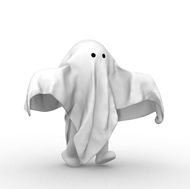
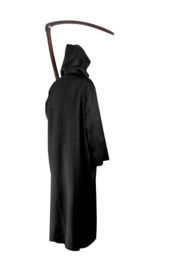
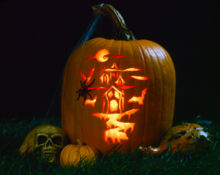
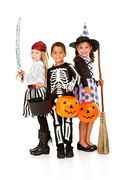
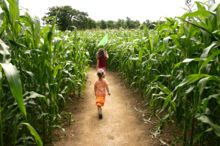
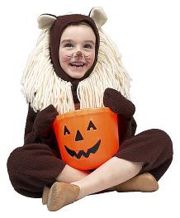

 Printer Friendly
Printer Friendly
